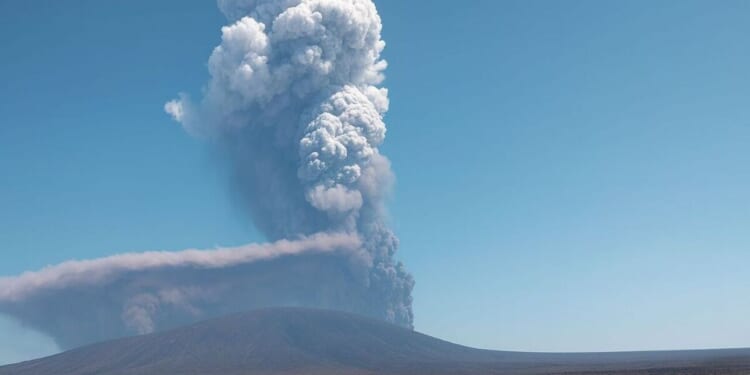A massive volcano has erupted in northeastern Ethiopia, releasing a large ash plume that is heading towards the Middle East, including Yemen and Oman. No eruptions have been recorded at the volcano in 10,000 years, according to officials and experts. It has been described as one of the most extraordinary volcanic awakenings in the region’s recorded history.
The explosive eruption at the Hayli Gubbi volcano began at around 8.30am UTC on Sunday (November 23), according to an advisory from the Toulouse Volcanic Ash Advisory Center (VAAC). Explosive activity continued through the afternoon, with ash rising to about 45,000 feet. The eruption has since stopped, but the ash cloud continues to move towards the Middle East.
VAAC maps released on Sunday showed lower-level ash drifting toward Djibouti and Yemen, according to BNO News. Higher-altitude ash was forecast to move east across Oman and into the Arabian Sea, while some upper-level ash was expected to drift farther northeast toward parts of Iran, Pakistan and India.
Hayli Gubbi is located southeast of the Erta Ale volcanic range in the Afar Rift, one of the most volcanically active areas in East Africa and home to a persistent lava lake. Although the region experiences frequent volcanic activity, volcanologist Simon Carn stated that there is no evidence that the volcano has erupted at any time during the Holocene period – the last 11,700 years since the previous major ice age.
It also sits within Ethiopia’s Danakil Depression, one of the world’s hottest and most remote areas.
Satellite images show both towering ash plumes and a significant release of sulphur dioxide (SO₂), a common indicator of major volcanic activity. Because the area is remote and largely uninhabited, satellite data remains the primary source of information for scientists monitoring the eruption.
No impacts on flights or nearby communities were immediately confirmed. However, flight data tracking websites like Flightradar24 are monitoring the situation.
Before Hayli Gubbi’s eruption on Sunday, the last major event was Mount Semeru in Indonesia, which erupted on November 19 and 20, forcing thousands to evacuate and damaging infrastructure due to large ash clouds and hot gas flows. Before this, the massive Hunga Tonga-Hunga Ha’apai volcano erupted in January 2022, triggering a large tsunami and producing the largest atmospheric explosion recorded by modern instruments.
















